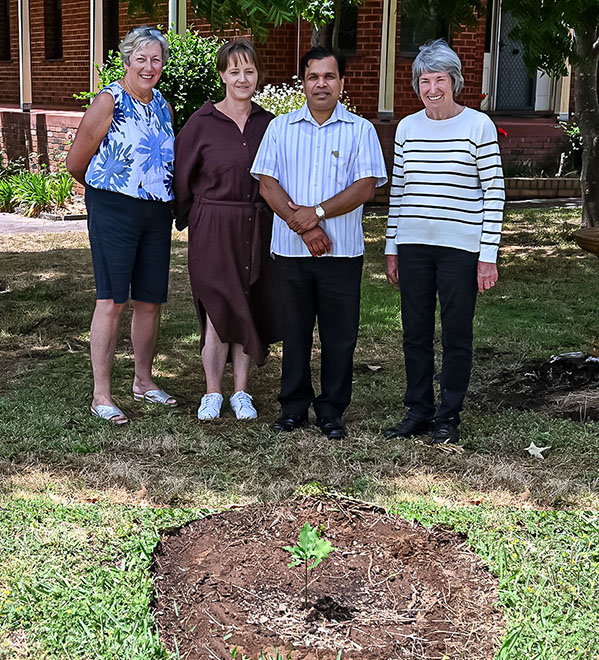

The 120th anniversary of St Brigid’s has been celebrated throughout this year.
The celebration was firstly noted by a Sunday mass on the 4 February, followed by an Irish themed supper.
Remarkably, ‘Tours of the Convent’, where a tour guide presented orally some of the long history around the school and church, were very successful, evoking wonderful memories for those who attended the tours with their stories adding to the history of St Brigid’s.
A memory of note from one of the boarders is of the current sports oval which, when she attended the school was a paddock of grazing milking cows which enthralled and amused the students at break times.
One of the special events that was held during the 120th anniversary was the showing of the patchwork tapestry in St Brigid’s Church; it was on show as part of the artwork on display during the Blackwood River Arts Trail.
The tapestry has hung on the back wall of St Brigid’s Church now for fifty-one years and still remains as a colourful welcome to the church.
To commemorate the occasion of the 120th anniversary the Parish organised a ‘brick paver’ fundraising opportunity.
A proposed new brick path will be placed in the garden which is located between St Brigid’s Church and the Convent.
Individual names can be etched onto the bricks that will be used to make up the path, giving those taking part in this fundraising venture an opportunity to secure a piece of history for themselves, their loved ones, and those who are dear to their hearts.
The monies raised from these events has gone towards the much-needed task of replacing the three double jarrah doors sets which are the entries on the church hall.
An adjunct to the 120-year celebrations of St Brigid’s in Bridgetown and the final event for the year was the planting of an oak tree seedling and the installation of a commemoration board celebrating and listing the names of the twenty-eight priests who dedicated part of their lives as serving priests to St Brigid’s in Bridgetown since 1899 and was commemorated at a mass held on Sunday, 15 September.
The oak tree has special meaning because St Brigid came from Kildare, ‘Kildare’ being Gaelic for ‘place of oak trees’. The tree was planted from an acorn which had self-seeded on a local property.
Who was St Brigid? Brigid was born in County Louth, Ireland in the year 451, two decades after Christianity was brought to Ireland.
Her mother is said to have been a Scottish slave who was baptized by St Patrick; so, Brigid herself was born into slavery but as a Christian.
Brigid is recorded as having founded a number of monasteries most notably in Kildare where she also founded a school of art which produced the Book of Kildare, a hand painted book of the four gospels. Sadly, the Book of Kildare has been lost.
Brigid legacy however is very apparent in Australia with a number of Collages and Schools right across Australia with the name St. Brigid’s.
This Story was published on December 3rd 2024
In Issue 349 of The Mailbag
© The Quality Shop 125 Hampton Street Bridgetown Western Australia 6255
mailbag@thequalityshop.com.au